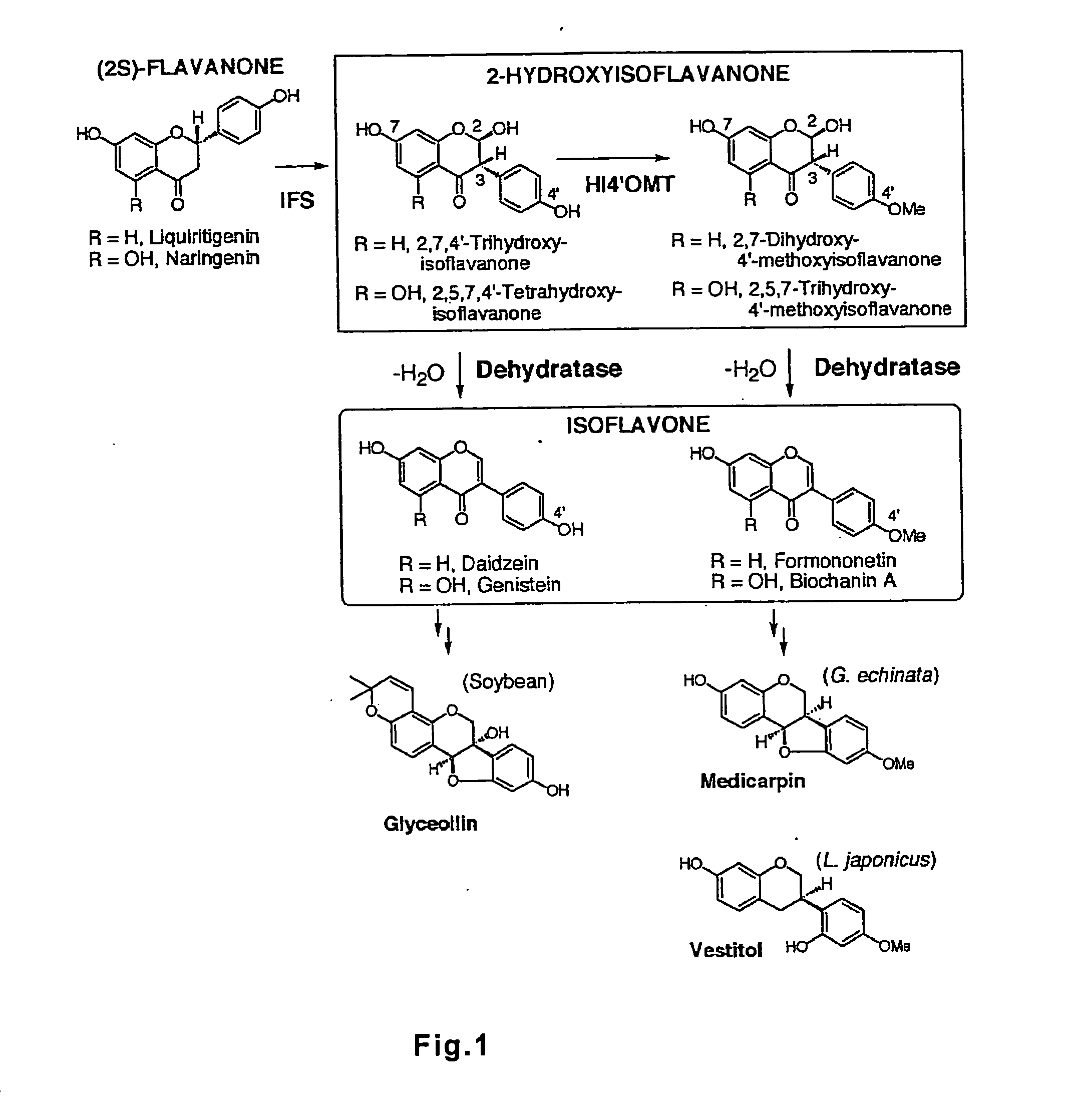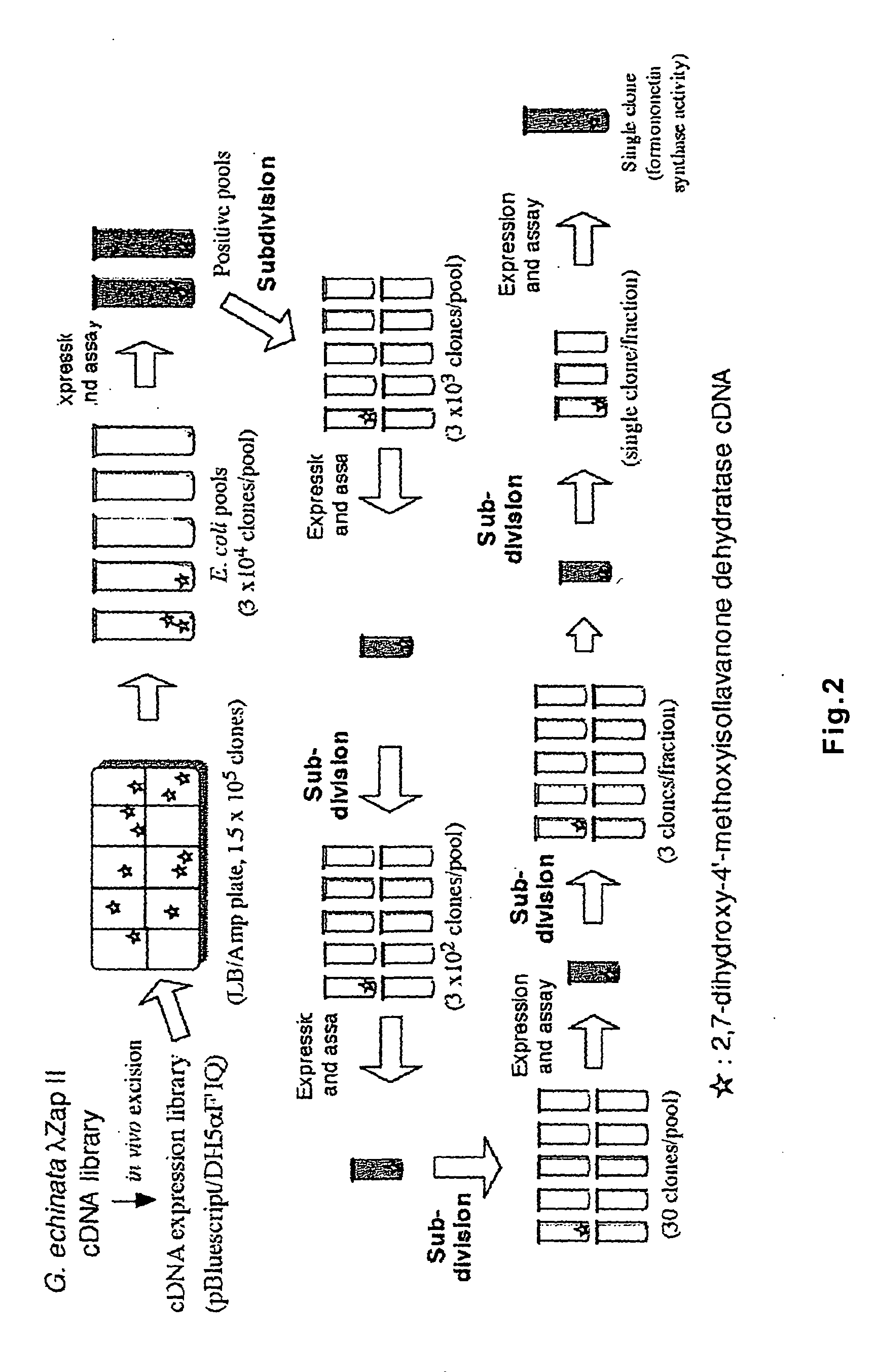Polynucleotide encoding 2-hydorxyisoflavanone dehydratase and application of the same
a technology of polynucleotide and isoflavone, which is applied in the field of polynucleotide, can solve the problems of inability to efficiently perform the details of the enzyme (2-hydroxyisoflavanone dehydratase), and the inability to explain isoflavones, so as to achieve the effect of increasing the production of isoflavon
- Summary
- Abstract
- Description
- Claims
- Application Information
AI Technical Summary
Benefits of technology
Problems solved by technology
Method used
Image
Examples
examples
[0035] Hereinafter, the present invention will be concretely described with reference to the following examples. However, the present invention is not limited to the examples.
[0036] Materials and methods used in the present invention are as follows.
(1) Chemical Materials
[0037] Daidzein, genistein, and biochanin A were obtained from Extrasynthese Co., Ltd., and (RS)-narigenin and p-nitrophenyl butyrate were obtained from Sigma Corporation. Formononetin was obtained from a stock in the inventors' laboratory.
[0038] Both 2,7,4′-trihydroxyisoflavanone (Non-Patent Document 13) and 2,7-dihydroxy-4′-methoxyisoflavanone (Non-Patent Document 12) were prepared as follows.
[0039] The 2,7,4′-trihydroxyisoflavanone was prepared by incubating a yeast microsome expressing CYP93C2 (IFS), liquiritigenin and NADPH, extracting with ethyl acetate, and separating by silica-gel TLC, followed by purification with reverse-phase HPLC. The 2,7-dihydroxy-4′-methoxyisoflavanone was prepared by extracting a...
PUM
| Property | Measurement | Unit |
|---|---|---|
| pH | aaaaa | aaaaa |
| total volume | aaaaa | aaaaa |
| concentration | aaaaa | aaaaa |
Abstract
Description
Claims
Application Information
 Login to View More
Login to View More - R&D
- Intellectual Property
- Life Sciences
- Materials
- Tech Scout
- Unparalleled Data Quality
- Higher Quality Content
- 60% Fewer Hallucinations
Browse by: Latest US Patents, China's latest patents, Technical Efficacy Thesaurus, Application Domain, Technology Topic, Popular Technical Reports.
© 2025 PatSnap. All rights reserved.Legal|Privacy policy|Modern Slavery Act Transparency Statement|Sitemap|About US| Contact US: help@patsnap.com



